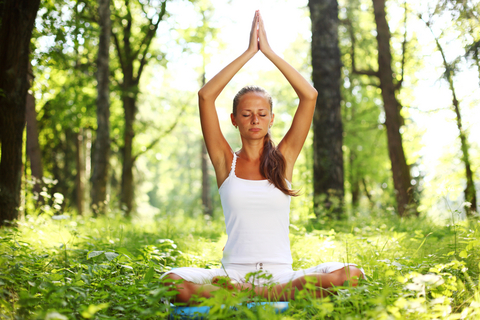
Holistic Rehab

Table of Contents
There are many reasons why people might suffer from an addiction disease. For some, the problems began because of an injury or illness that required pharmaceutical medication – medication they might not have even known could be addictive. Others may have suffered from an illness, such as major depression or anxiety that was never properly treated, or even diagnosed. Still others may have experienced some trauma in their lives that has gone unresolved for too many years. All of these things, and more, can lead someone into the depths of alcohol or drug abuse and addiction. At Axis, we recognize that each person is an individual. Each person is more than a set of symptoms to be rubber-stamped and treated. We take a holistic approach and treat each person as they should be treated – as an individual.
A holistic approach to rehabilitation and the treatment of drug addiction is one that looks at every part of a person – the whole person. Even in a group therapy session, no two individuals are the same. Their backgrounds and experiences are unique. How they might respond to one treatment style over another is unique. Holistic healing methods give you the opportunity to learn and grow with your own strengths, weaknesses and processes. The great thing about holistic treatment is that there is generally something for everyone to use for their own health and benefit.
What Kinds of Treatments Are Available for Holistic Healing?
According to the U.S. National Library of Medicine – a division of the National Institute of Health – meditation is a viable treatment for reducing stress, anxiety, pain and depression as well as for creating higher self-esteem and uplifting one’s mood. Mediation is one treatment program that concerns itself with treating the whole mind and body of a person that is central to holistic rehab. It has been used productively for thousands of years. It is the process of centering one’s attention and focusing energy to our thoughts, our physical reality and our feelings about that reality. When we meditate, we learn to not judge, but to simply experience. According to the National Center for Complementary and Alternative Medicine, recent studies concerning meditation have provided measureable results that show a potential effect on mental health, and just as importantly, physical health.
Back to Top
Therapeutic Massage
Have you ever had the opportunity to submit to a real massage? You will find, throughout the holistic rehabilitation treatment style, much attention is paid to finding natural – that is, non-medicated – ways to reduce the stress, pain and anxiety that can mark the recovery process. Massage is one of the techniques that have been proven to help all of those conditions, and more.
Techniques
There are several types of massage that have been used throughout the years, including:
- Swedish massage
- Sports massage
- Deep tissue massage
- Trigger point massage
Holistic massage practices include all of these types of massage in order to treat the entire body and help it to relax, despite the withdrawal symptoms you may be experiencing.
Back to Top
Acupuncture and Acupressure Techniques
Acupuncture isn’t as frightening as it may sounds, and clinical studies have shown that is can be effective for the treatment of chemotherapy-induced nausea. The entire premise of acupuncture, and its neighbor, acupressure, is based on the balance of qi (pronounced “chee”), which means vital, or life force, energy. Historically, the Chinese believe that this energy flows throughout the human body and when it is not flowing properly, diseases such as addiction or the effects of withdrawal, can occur. Acupuncture is a process by which proper qi can be restored to the human body.
Acupuncture involves the gentle insertion of needles along lines in the human form called meridians. These lines are the flow lines of qi. Some of the lines are internal and associated or attached to the various human organs. Others are attached to the skin, and all meridians intersect at some point. The practitioner will insert and gently manipulate the needle at a point in the skin that will connect to the place in the body that needs attention.
Don’t let the mention of needles alarm you, if you are unfamiliar with the practice of acupuncture. The needles are not hollow, like an injection needle used by a traditional physician, and they are often quite small and thin. There is generally no bleeding involved, and if there is any pain involved, it is quite nominal.
Back to Top
 Yoga and Exercise
Yoga and Exercise
Have you ever heard someone claim that exercise can make you feel better emotionally as well as physically? According to a report released by Bryn Mawr College in Pennsylvania, these claims are absolutely true. Exercise releases neurotransmitters that reduce pain on a physical and mental plane. In fact, exercise actually creates new neurons in the brain. Other benefits of exercise, of course, are the increase in overall health through weight loss and control, increased cardiovascular health and improved oxygen flow. A holistic approach to drug treatment includes having access to a gym where residents can learn proper methods of exercise for the greatest effects on overall health and wellness.
Another form of exercise that combines both physical and mental exercise is yoga. In a report from the Mayo Clinic, the staff states that yoga reduces stress and anxiety, which can lead to both physical and emotional problems. Yoga joins the physical and mental bodies through discipline. When you begin a yoga regime, you learn how to balance your diet, meditation and lifestyle behaviors into a cohesive unit that has far-reaching benefits.
Back to Top
Why Are Mind Body Techniques Important for Addiction Treatment?
The National Institute on Drug Abuse has stated that many individuals who suffer from drug addiction also suffer from a dual diagnosis condition that has either stemmed from the addiction disorder or may have caused the addiction disorder. Whether the egg came first, or the chicken, doesn’t matter as much as treating both conditions, and the overall person, at the same time.
What Gets Treated
According to research conducted by the U.S. Justice Department, some of these conditions might include:
- Schizophrenia
- Depression
- Attention deficit hyperactivity disorder
- Obsessive-compulsive disorder
- Post-traumatic stress disorder
- Antisocial personality disorder
- Bipolar disorder
Drug addiction brings with it societal problems in our everyday lives. For instance, a person who is battling addiction may find that they are spending a great portion of their income on drugs, rather than paying their important bills. When they don’t pay our rent, they lose our housing. If they do not keep up with their car payment, their car is repossessed by the bank. If they are unable to get to work because they either have no car, or they are using drugs, they may lose their job. Suddenly, their life, which may have been moving along with great success, is completely changed. As a result, they may become anxious or depressed, which in turn leads them deeper into the cycle of addiction.
On the other side of the coin, if the person suffers from a condition like post-traumatic stress disorder as a result of trauma earlier in our lives – such as combat, physical or sexual abuse, or abandonment issues stemming from a divorce – they may turn to drugs in order to simply feel better. It is even possible to become addicted to the medications doctors prescribe to treat these very conditions.
In order to treat the addiction, the director of the National Institute on Drug Abuse indicates that it is paramount that attention is paid to the co-morbid conditions. If they are ignored, there is a greater chance to suffer significant relapse once the treatment process as finished.
At Axis, we understand the connection between one’s mind and body. We tailor our treatment plans to each individual. Let us help you discover the wealth of power in your mind and the full potential of health for your body by contacting us today for a free consultation.
Back to Top
Further Reading
- Benefits of a Palm Springs Area Drug Rehab
- Choosing a Center
- Choosing the Right Facility
- Considering Outpatient as a Treatment Option?
- Convincing a Loved One to Attend Drug Rehabilitation
- Drug Abuse Rehab
- Drug Recovery in Los Angeles
- Drug Rehab for Celebrities and Public Figures
- Drug Rehab Programs
- Drug Rehabilitation Statistics
- FAQ on Heroin Rehab
- Holistic Rehab
- Inpatient Rehab as a Treatment Option
- Medical Clinics for the Treatment of Addiction
- Paying for Drug Rehab
- Residential Drug Rehab
- The Admissions Criteria for a Drug Rehab Program
- The Benefits of Rehab in Los Angeles
- The Efficacy of Long Term Treatment
- The Process of Addiciton Rehabilitation
- Tips on Finding the Right Cocaine Rehab
- Types of Specialists at a Drug Rehab Center
- What to Bring to Drug Rehab






